Are You Ready for Continuous Nutrient Monitoring?
The EXO NitraLED UV Nitrate Sensor, built with novel LED technology, was designed specifically with long-term water quality nutrient monitoring field deployments in mind. NitraLED seamlessly integrates into the EXO platform to become an essential component of a water quality monitoring system leading to more informed decision-making. Thanks to its small size and low power draw, NitraLED can be deployed in an EXO Sonde for autonomous monitoring quickly, without the need for significant modifications to existing infrastructure.
Getting set up to monitor for nitrate with the NitraLED Sensor is simple, but a few items are needed to get started. Learn more about the sensor and accessories needed for a seamless continuous nitrate monitoring installation and deployment of the NitraLED Sensor.
5 Things You’ll Need for EXO NitraLED Continuous Nitrate Monitoring
- EXO Multiparameter Sonde
- EXO Turbidity Sensor
- EXO Conductivity & Temperature Sensor
- EXO NitraLED Calibration Standard
- EXO NitraLED Sensor for EXO1 or Kit for EXO2/EXO3
(Kit includes Alignment Ring and NitraLED Wiper Brush)
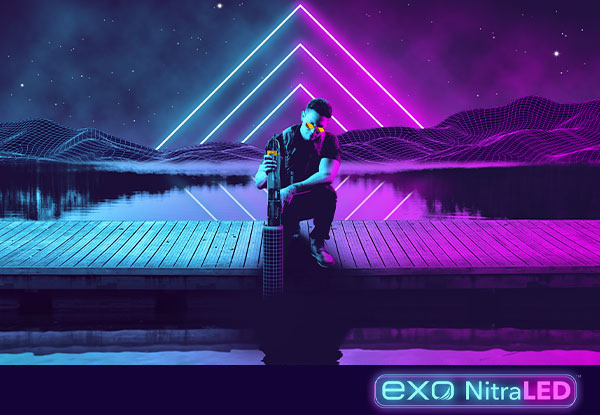
Building a Monitoring System
The components below are necessary for building an EXO system that will incorporate the NitraLED sensor for nitrate monitoring. The sonde adds significant value thanks to the wide variety of digital smart sensors that can be easily incorporated into the system. Some sensors are required for use with NitraLED, while others are optional to enhance your water monitoring capabilities. Monitoring harmful algae blooms, tracking sources causing eutrophication, and planning for drinking water treatments based on source water conditions are all possible with EXO!
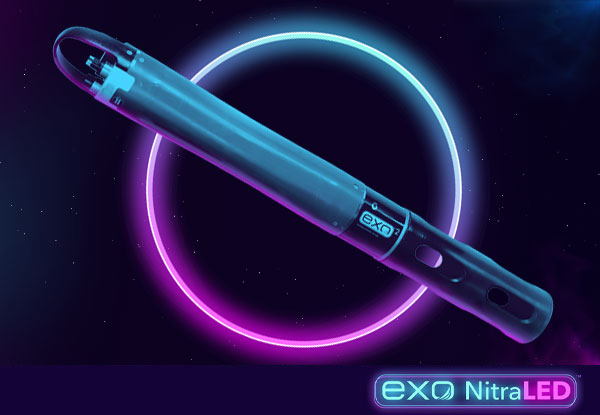
1) EXO Multiparameter Sonde
The EXO family of multiparameter sondes provides a robust water quality data collection platform that ensures the highest quality data thanks to digital smart sensors with SmartQC and industry-leading anti-fouling technology. Up to seven smart sensors can be installed on an EXO2 for a complete water quality monitoring package, with less draw and smaller size than traditional single-parameter nitrate monitors.
The EXO Sonde provides the power, data storage, and connection point required for NitraLED use – we recommend the EXO2 or EXO3 for long-term water quality monitoring deployments. Additional sensors can be paired with EXO NitraLED, including Total Algae, Optical Dissolved Oxygen, and pH/ORP to better understand your water conditions.
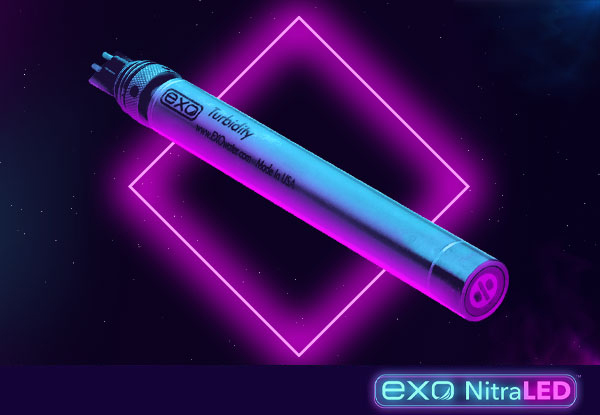
2) EXO Turbidity Sensor
Turbidity is the cloudiness of the water due to particulate matter, such as sand or clay. The EXO Turbidity Sensor is designed to measure water cloudiness directly in the water and is necessary for using EXO NitraLED.
Sediment attenuation has a significant effect on any field nitrate measurement, so it is important to account for the amount and also the type. The Turbidity Sensor is essential for NitraLED to account for interferences caused by suspended particles. EXO NitraLED should be deployed in conditions where the turbidity is less than 200 FNU/NTU. In addition to correcting for interferences, the EXO Turbidity Sensor provides a clearer understanding of water conditions.
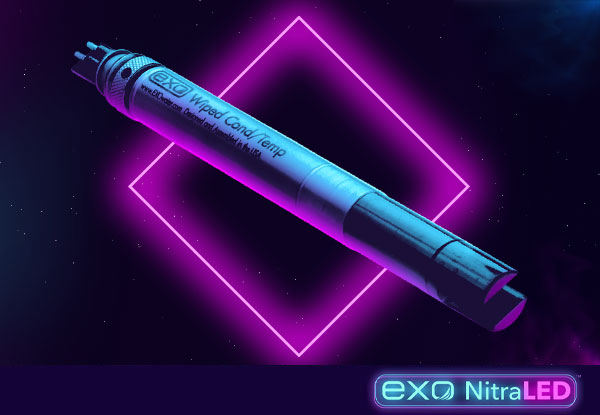
3) EXO Conductivity & Temperature Sensor
Temperature and conductance are two critical parameters that impact virtually all water quality measurements. YSI has combined these two sensors into a single probe for maximum efficiency. It is extremely important to include a C/T Sensor in your EXO payload, as most sensors require temperature compensation.
YSI offers two versions of this sensor: a standard C/T Sensor and a Wiped C/T Sensor with an open cell to enable anti-fouling with the EXO Central Wiper. The Wiped C/T is recommended for long-term deployments on an EXO2 or EXO3 Sonde.
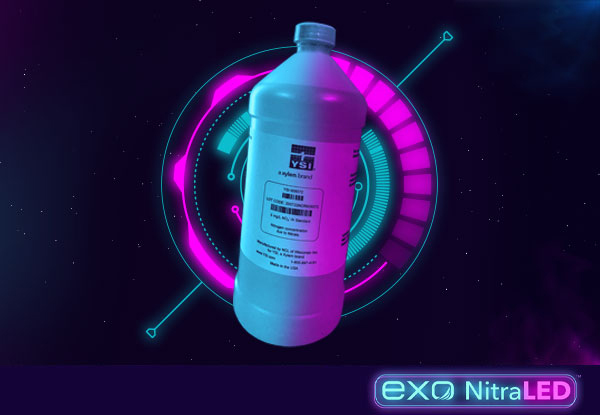
4) EXO NitraLED Calibration Standards
EXO provides users with the ability to quickly and easily calibrate their NitraLED Sensors; no need to ship back for factory calibration. Calibration standard solutions are available in concentrations of 5 and 10 mg/L NO3-N versions.
A simple two-point calibration is necessary for getting EXO NitraLED set up and ready for use. Ultrapure (Type 1) water should be used for the first point set at 0 mg/L NO3-N. YSI recommends using the 5 or 10 mg/L NO3-N standards mentioned above for the second calibration point. These standards are filtered to remove optical interferences that may be present in other calibration standards, such as those used for calibration ion-selective electrodes.
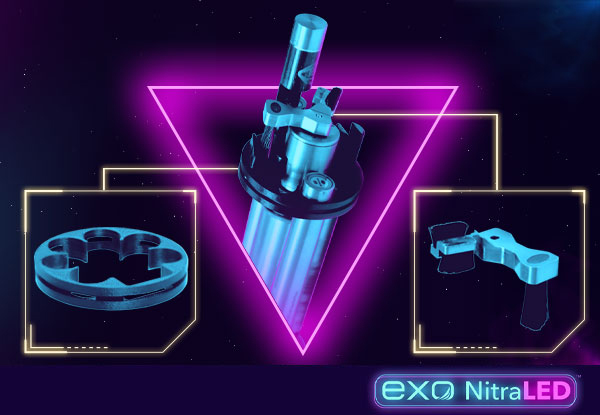
5) EXO Alignment Kit and NitraLED Wiper Brush
The EXO Alignment Kit fits around the EXO sensor payload to minimize movement while the NitraLED Wiper Brush cleans the sensor faces. The Alignment Ring is held tightly in place by an o-ring that makes contact with the sensors. A NitraLED-specific wiper effectively cleans all sensor faces with its two-arm design.
Fouling is the primary source of bad data in water quality monitoring applications. EXO’s best-in-class Central Wiper mitigates the effects of fouling. The Alignment Kit and NitraLED Wiper Brush are necessary to ensure that the NitraLED Sensor, and all other EXO sensors, is wiped during deployment. These accessories are available separately or as part of an EXO NitraLED Sensor Kit, allowing for lengthier deployment times resulting in less frequent trips to the field – saving you time and money.
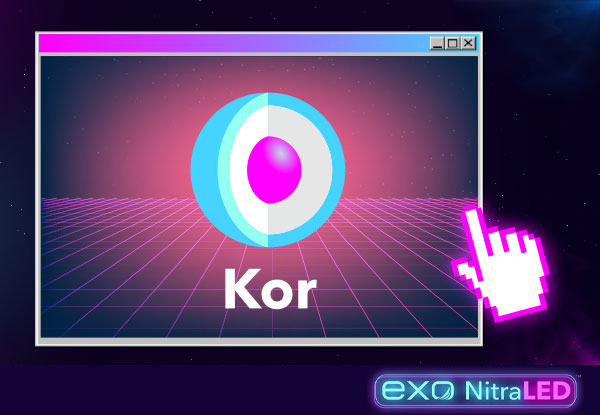
Site-Specific Corrections
Users have the option to perform additional corrections, optimizing EXO NitraLED for water conditions at a specific deployment site. Additional information about how to perform the Site-Specific Correction procedure can be found in the User Manual.
For more technical information on how the sensor works and why you might choose to perform a correction, please read the Tech Note: EXO NitraLED Corrections for Turbidity and NOM.
Make sure you are using KorEXO v2.3.10.0 or newer as well as the latest firmware for all sensors and the Central Wiper.
Additional Information
For additional information about EXO NitraLED, please visit the following:

Additional Blog Posts of Interest
Nutrient Monitoring Will Never Be the Same | NitraLED UV
What You Need to Know When Buying a Monitoring Buoy